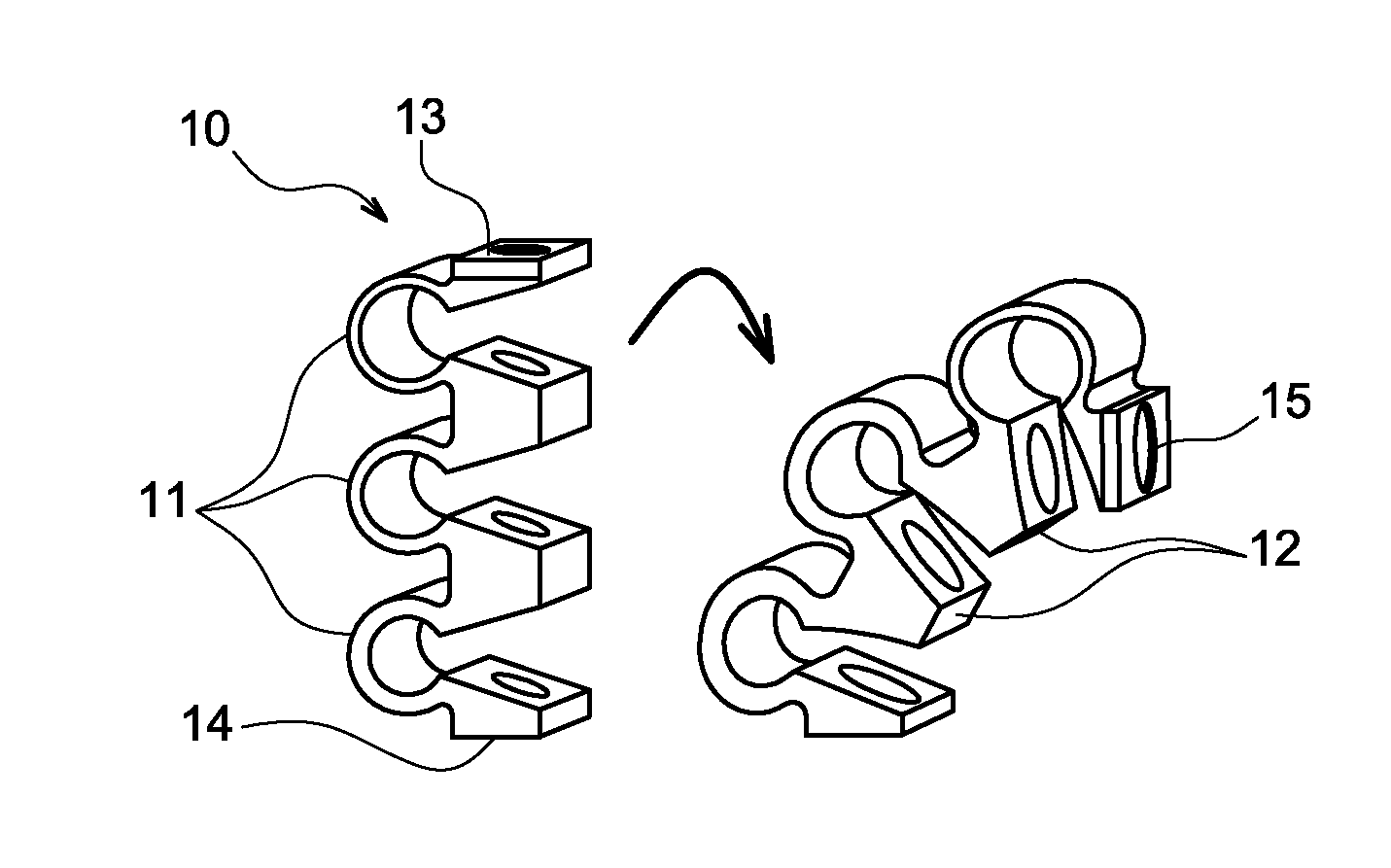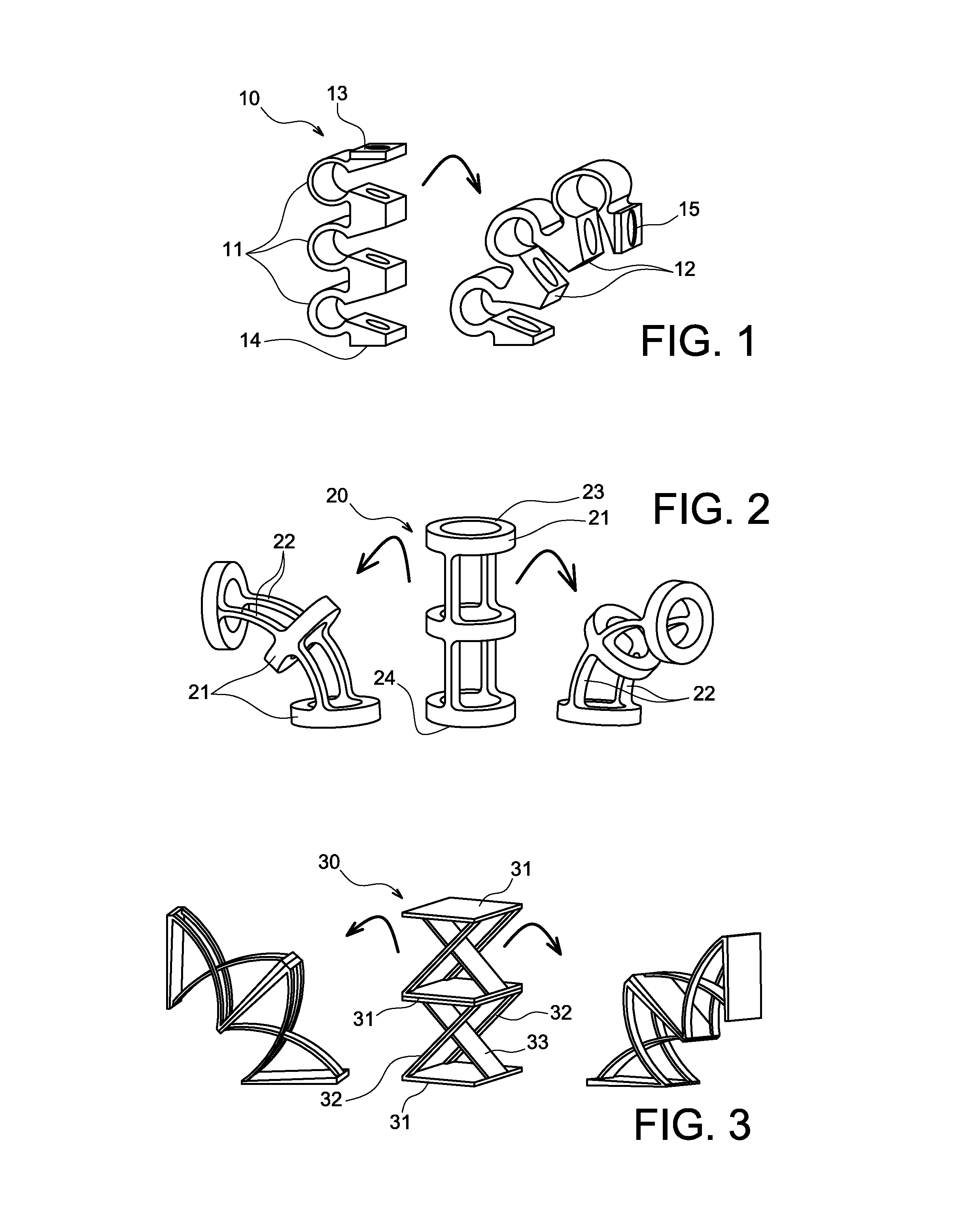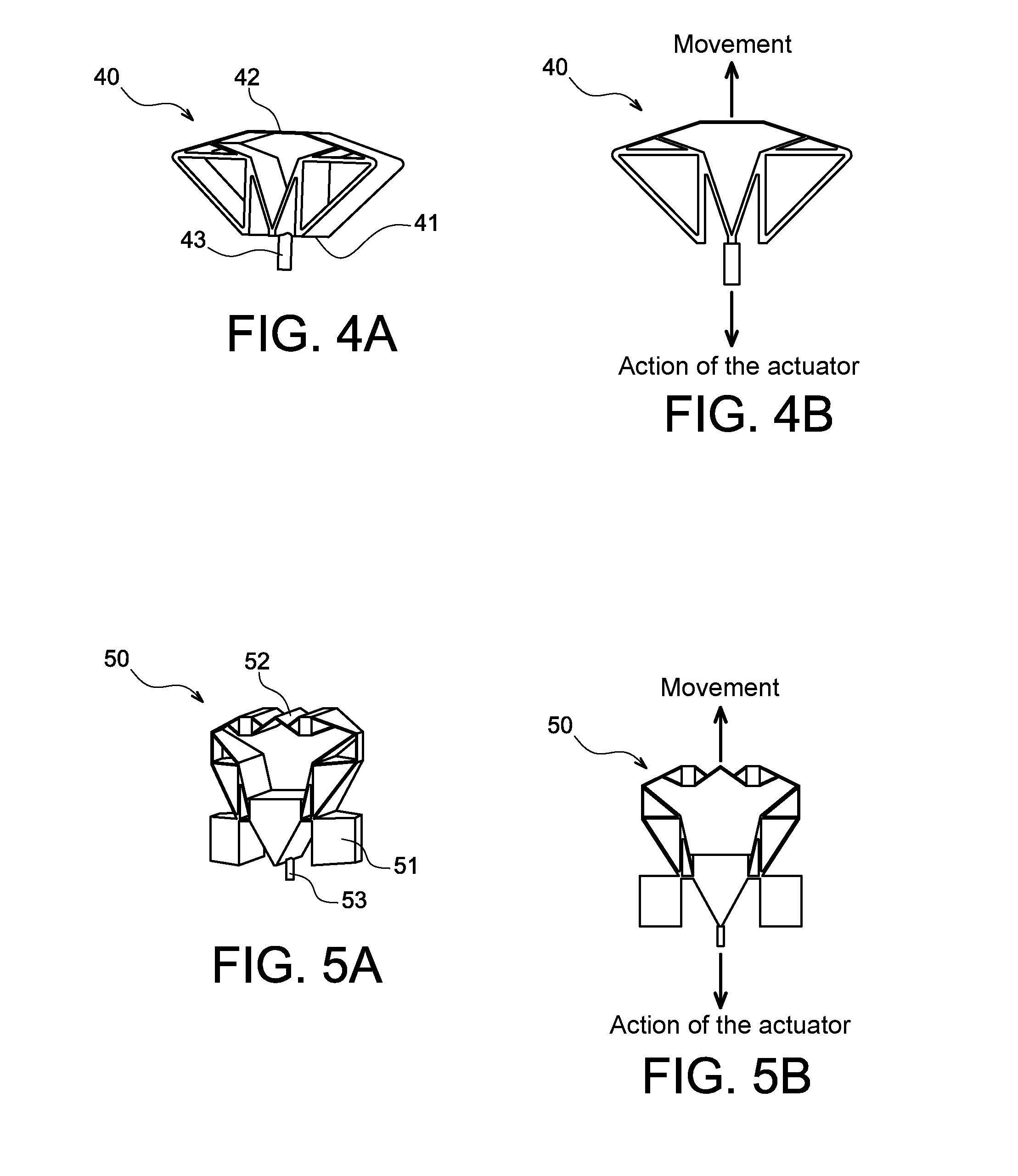Integrated mecatronic structure for portable manipulator assembly
a portable manipulator and integrated technology, applied in the direction of positive displacement engines, flexible wall reciprocating engines, program-controlled manipulators, etc., can solve the problems of inability to use for operating tasks requiring tissue force application, and inability to achieve skilful local action, etc., to achieve the combination of high power and low encumbrance, and possible with measurement of forces applied,
- Summary
- Abstract
- Description
- Claims
- Application Information
AI Technical Summary
Benefits of technology
Problems solved by technology
Method used
Image
Examples
Embodiment Construction
[0027]The present invention has been designed to remedy the disadvantages of the devices of the prior art set out above.
[0028]To this end, according to the present invention, an integrated mecatronic structure is provided which can be used in a manipulator assembly with one or more degrees of mobility, where the manipulator assembly is intended to interact with, be positioned on, or introduced into, the body of a patient, and where the integrated mecatronic structure can be actuated selectively from control means by actuation means. It consists of at least one flexible element and at least one actuator attached to the flexible element in such a way that it is able to impart a motion activated by the control means to the flexible element. The actuator is a volume-change actuator, located on the structure (or proximately deployed), and associated with a dedicated power unit (i.e. one which is specific to it). This unit includes a tank and / or an element for converting the supplied powe...
PUM
 Login to View More
Login to View More Abstract
Description
Claims
Application Information
 Login to View More
Login to View More - R&D
- Intellectual Property
- Life Sciences
- Materials
- Tech Scout
- Unparalleled Data Quality
- Higher Quality Content
- 60% Fewer Hallucinations
Browse by: Latest US Patents, China's latest patents, Technical Efficacy Thesaurus, Application Domain, Technology Topic, Popular Technical Reports.
© 2025 PatSnap. All rights reserved.Legal|Privacy policy|Modern Slavery Act Transparency Statement|Sitemap|About US| Contact US: help@patsnap.com



